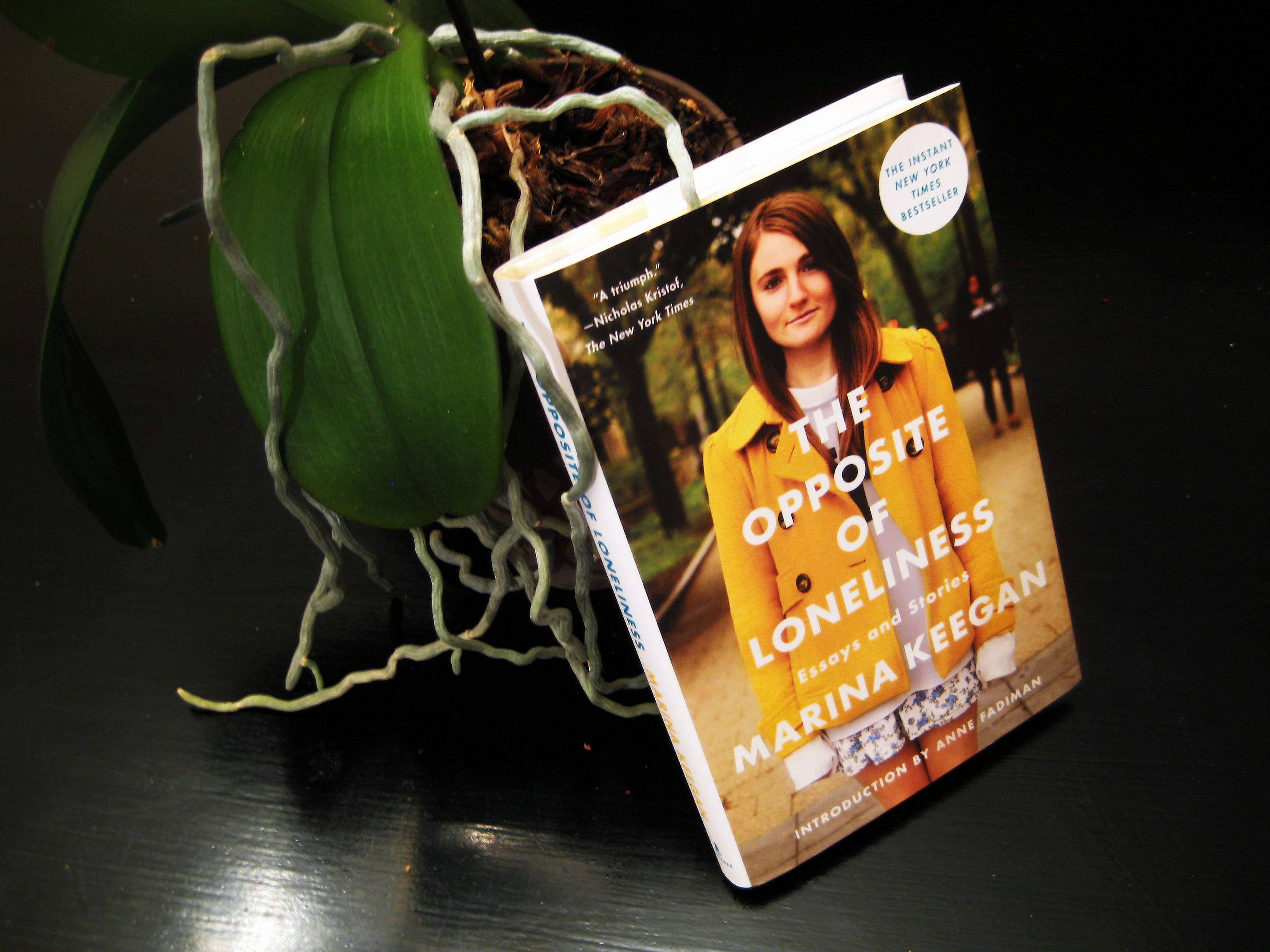What does twenty-two years old look like? “In love, impressed, humbled, scared.” That is exactly how Marina Keegan felt as she was graduating from Yale in 2012 and how it feels to read her book The Opposite of Loneliness.
I selected Keegan’s book after I read the original essay. I heard about her talent, her job at the New York Times, and her relationship with Harold Bloom. I heard about her death. And I was scared. I was downright terrified, in fact. The truth is she wasn’t that much older than me and she had accomplished so much in such a little amount of time. There is a vacuum of potential that exists because she died.
I suppose it wouldn’t be a Read Harder challenge if it was easy, so when I saw a novel by an author under the age of 25 was on the list I knew it couldn’t be any other book.
Keegan broke my heart just like I thought she would. I tried to remain critical while reading. As the introduction by Anne Fadiman suggests, she wanted her writing to be judged as it is, not romanticized and put on a pedestal because she died. As a fellow English major I can respect it, and I did my best.
So to begin, my first criticism is her fiction is not as strong as her non-fiction. I found her short stories difficult to relate to despite the fact that many were about drugs, relationships, hope, envy, love, anxiety, and heartbreak. All fairly normal human emotions. Yet, I didn’t feel that any of the characters were familiar to me. The emotions felt flat and contrived. As if they were just stories about the things she felt she should write about, and not anything she truly connected with. I mostly just felt sad the whole time. The dramatic turns weren’t that dramatic. The surprises, unsurprising. “Reading Aloud” is perhaps the one exception. It’s inventiveness convinced me to keep reading.
I could see moments where there could have been more tidying up. Dialogue that felt purposeless and too long, for example. The occasional weak or odd sentence would crop up. And I would think to myself: “She would’ve wanted to change that.” Then kick myself for being sappy and move on. I ended up reading the whole book practically in one sitting that way.
The small pieces of Keegan’s poetry which appear inbetween the fiction and non-fiction sections were fantastic. I have always preferred free verse and I found those small snippets were more emotionally-driven than whole stories in her collection. Where her stories felt hollow, her poetry blew me away.
Then I got to the non-fiction. Keegan’s true storytelling gift shines in her ability to cross the border of telling you facts and telling the truth about life. “Why We Care about Whales,” “Against the Grain,” and “I Kill for Money” are my favourite pieces in the whole book. “Against the Grain,” truly stopped me cold. I was a wreck. Of all the love stories in The Opposite of Loneliness, Keegan’s love for her mother and her mother’s love for her could not be topped.
The Opposite of Loneliness is a testament to any young, aspiring writer. It tells you there will be hits and there will be misses with confidence in every attempt. Watching Keegan’s writing change from story to story, and seeing what themes stuck with her made her feel like a classmate. You can see the progression. See the experimentation with different styles and characters.
Keegan’s writing also speaks volumes about her, and it makes you appreciate your ability to keep going. She pinches you and punches you in turns so you feel exhausted. So you feel you need to finish it in one sitting. So you need to get up and try and capture all the difficulties in life. So you need to go out in the world and fail a few times, and then maybe, just maybe, succeed.

